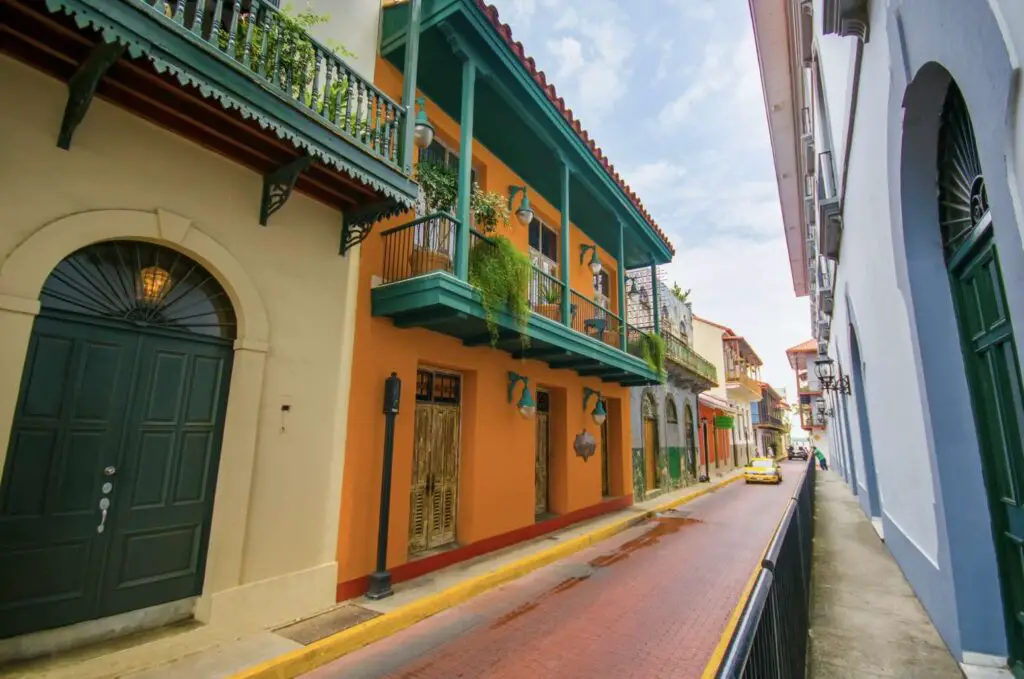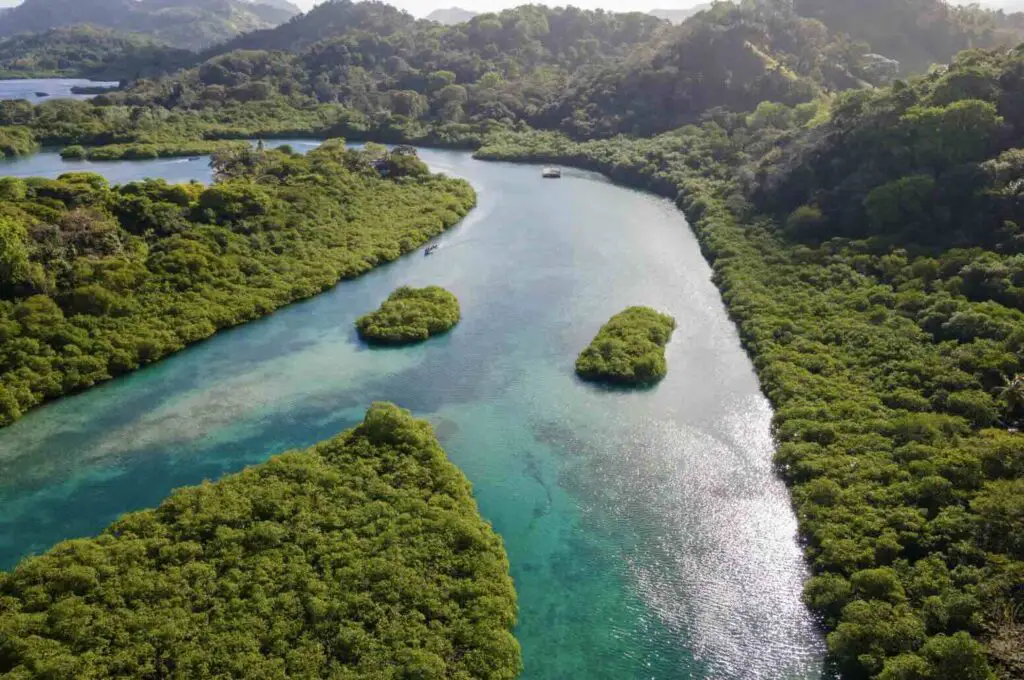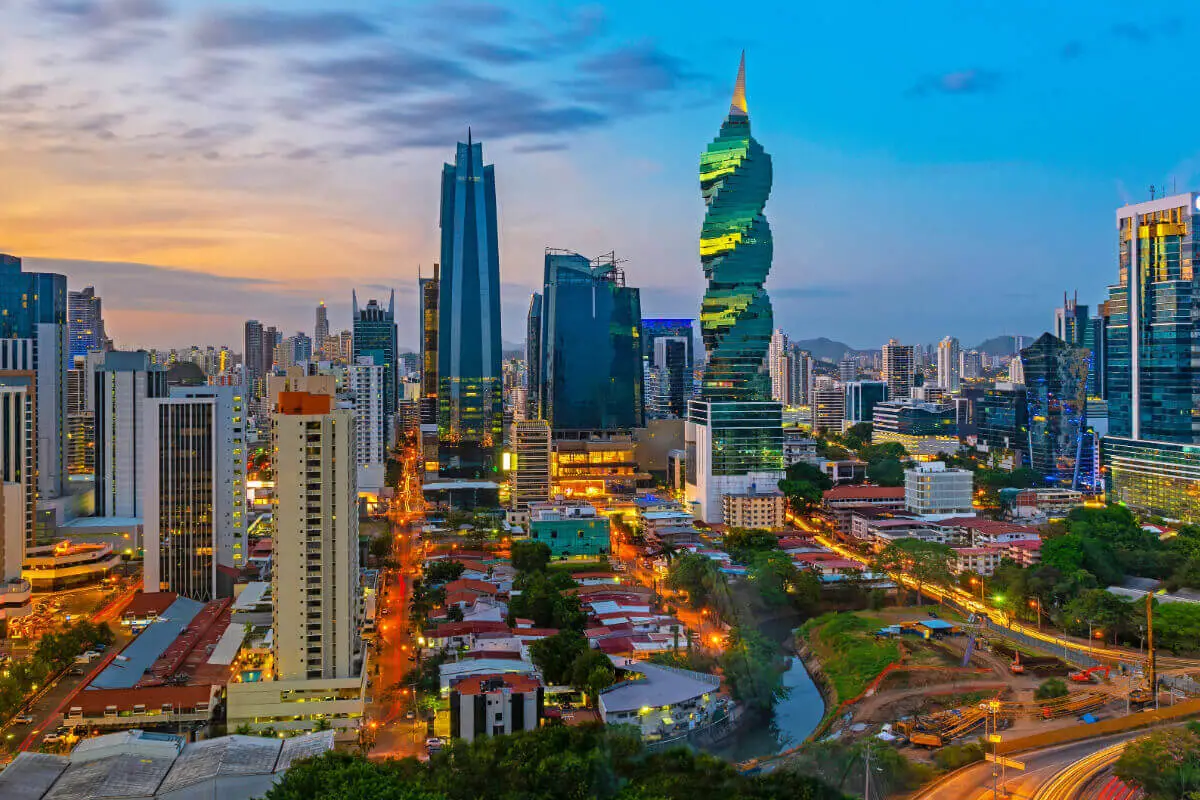Panama, a small yet strategically positioned country, is a fascinating subject due to its unique geographical positioning and cultural distinctiveness. Nestled at the junction of two continents, North and South America, it provides a natural bridge that has shaped its historical, cultural, and geographical identity. This land, marked by its lush landscapes and vibrant cultures, unfolds integration stories from both hemispheres.
Panama’s culturally rich heritage, influenced by influences from different Americas, and its strategic geographical location have resulted in a distinctive Panamanian identity. It’s not just a matter of mere geographical coordinates but also a blend of cultural dynamism and historical narratives that define Panama and its continental identity.
Table of Contents
- Panama’s Geographical Position
- Panama’s Cultural Influence
- Panama’s Historical Background
- Related Content
Panama’s Geographical Position
Panama: A Geographical Marvel and Its Continental Charm
Are you in for a fascinating journey to lemur Panama from its geographical perspective? Embark on this engaging expedition and measure the essence of Panama’s geographical position and its outstanding continental connectivity.
Nestled cozily in the heart of the American landmass, Panama presents a geography beyond its famous canal. Being the southernmost part of Central America, this incredible country is a narrow bridge connecting North and South America. This strategic position goes a long way in influencing its continental association.
Delving deeper, you’ll recognize that Panama’s geographical position savors a subtropical flavor. The tropical rainforests that cloak the country add to its unapparelled biodiversity, attracting ecological enthusiasts and wanderers from every corner of the globe. This unique location contributes largely to its attractiveness and plays a massive role in Panama’s ecological panorama.
Panama’s unique positioning between two mighty oceans, the Atlantic and the Pacific, creates a fascinating fusion of marine life and environments, making the country’s waters a glorious habitat for varied aquatic life forms. The Pacific waters in the west meet the Caribbean Sea in the east, leading to riveting coastlines that weave a beautiful combination of beaches, mangroves, and coral reefs.
The country’s link between North and South America provides an important trade path, with the globally renowned Panama Canal playing a pivotal role. The canal, a significant conduit for international maritime trade, contributes largely to Panama’s economy and cultural diversity.
Panama presents a diverse ethnic culture due to its geographical junction. The blend of cultures in the country is the result of years of influences from Europe, Africa, and the Americas. You can observe a rich tapestry of cultural variety in its language, food, and traditions.
Finally, Panama’s unique positioning is strategically important from a climatic point of view. The country features a tropical climate with high humidity and rainfall. The closeness to the Equator ensures a fairly constant temperature throughout the year, making Panama a year-round tropical retreat. Moreover, the country’s famous “biodiversity bridge,” thanks to its geographical location, houses more bird species than the entire North American continent!
Thus, it’s clear that Panama’s geographical position has a tremendous influence on its continental association. This tiny nation, at the convergence of continents and oceans, presents a rich biodiversity, diverse cultures, and economic boon. A visit to Panama truly offers a slice of all things continental, with a dash of the tropical! So, are you ready to embrace the Panamanian vibes? Adventure awaits.

Panama’s Cultural Influence
Panama – A Cultural Confluence Shaped by Continental Interactions
Cast a glance over the map, and Panama, the slender yet potent country in the southernmost part of Central America, captures your gaze. But Panama’s authentic charm lies not in its geography but in the vibrant cultural potpourri it presents. Emerging from an intriguing blend of continental influences, Panama’s uniquely diverse culture forms a captivating chronicle of its continental identification.
As a country linking North and South America and sandwiched between two major oceans, Panama absorbs various cultural influences that shape its identity. Striking a delicate balance between preserved traditions and modernization, Panama immerses in a symphony of cultural influences blended harmoniously into its social fabric.
The influences of indigenous tribes such as the Kuna, Guna, and Embera-Wounaan are prominently reflected in Panama’s traditional practices, languages, art, and customs. Their vibrant molas, iconic dugout canoes, and intricate beadwork uniquely flavor Panama’s rich cultural milieu. European impact, notably Spanish, is evident in the language, architecture, and religion – a pulsating reflection of Panama’s colorful colonial past.
African influences, a powerful result of the Atlantic Slave Trade, shaped the Afro-Panamanian culture prevalent, especially in towns like Portobelo and Colon. Whether it’s the infectious drumbeats resonating in festivals or the irresistible scent of Afro-Caribbean cuisine wafting through the streets, this influence swathes Panama with an intriguing vibrancy.
Yankee imperialism has left an indelible mark, too, with American influence permeating post-Canal Panama. This Western impact is starkly visible in Panama City’s skyline, punctuated with shimmering skyscrapers, hip food scenes, and buzzing nightlife. It is a stark contrast to the humble rural life that thrives elsewhere in the country.
Panama also infuses Asian culture, with Chinese and Indian communities contributing to its multicultural tableau. From Chinese-built railways to yoga and incense, these Asian cultural undercurrents enrich Panama’s cultural fabric.
A saunter down Panama’s colorful city streets showcases a cultural palette that has consistently evolved while subtly retaining an essence of its original roots. The architectural play of Spanish colonial buildings standing alongside modern high-rises, traditional Panamanian ceviche sold next to oriental dim sums, or the fascinating blend of languages spoken on the streets – all paint a vivid picture of Panama’s continental identification.
Unfolding in this concert of cultures, Panama stands as a testament to how cross-continental influences can harmonize to create an identity that’s beautifully diverse yet uniquely cohesive. This eclectic fusion offers not just a haunting beauty for the aesthete but also a wealth of insights for the curious, a treasure trove for the history buff, and a sensory smorgasbord for the traveler.
So, here’s Panama, the narrow isthmus straddling two continents, announcing its presence to the world, not just as a geographical bridge but, more prominently, as a vibrant cultural intersection of the Americas.

Panama’s Historical Background
With its lush biodiversity and strategic geographical importance, Panama intertwines history, culture, and continental identity in a vibrant tapestry of human experience. What truly sets Panama apart, though, are the rich layers of influences that have shaped its cultural identity over centuries. While we’ve marveled at Panama’s geographical wonders and the economic significance of the Panama Canal, let’s delve into the historical influences that have etched their indelible marks on this influential hub of the Americas.
From remote rainforests to bustling cityscapes, Panama is a harmonious blend of indigenous, European, African, American, and Asian influences. Indigenous tribes, such as the Kuna and Ngöbe-Buglé, were the original inhabitants before Christopher Columbus arrived in 1502. Their vibrant cultures echoed in traditional crafts and rituals, are alive and well, reminding us of the country’s deep ancestral roots.
The Spanish colonizers, on the other hand, left lasting impressions on the Panamanian landscape. Spanish is the official language, and Roman Catholicism, brought over by the Spanish, remains the predominant religion. If you stroll around Casco Viejo, Panama City’s old quarter, you’ll be awed by Spanish colonial architecture, a testament to their profound influence on Panama’s cultural and architectural sphere.
Not to be left out is the indomitable spirit of the Afro-Panamanian population, which infuses the country with vibrant resilience. They have significantly contributed to Panama’s cultural fabric, from music and dance to cuisine. African traditions are beautifully intertwined with Panamanian customs, creating a blended identity that is uniquely Afro-Panamanian.
America’s extensive involvement in building the Panama Canal has carved out a significant niche in Panama’s cultural and economic landscapes. Modern Panama City resembles Miami, with its skyscrapers and fast pace. American fast-food chains dot the city, and US dollars are commonly used in addition to the local currency, marking the strong American influence.
Perhaps lesser-known but equally important is the Asian imprint on Panama. Immigrants from China and India have made Panama their home, contributing rich culinary traditions and business practices to the nation’s cultural mosaic.
As a venturous traveler, stepping into Panama is akin to stepping into a rich tapestry of cross-continental interactions. The preservation of its original roots, combined with its cultural evolution, makes Panama a fascinating spot for cultural enthusiasts and history buffs. It’s a beautiful testament to how influences from different continents can blend to form a harmonious and thriving cultural entity. The wind whispers tales of global influences in Panama; all we need to do is stop, listen, and understand.

Delving into Panama’s geographical positioning, cultural influences, and historical background gives us a broader understanding of its unique character. Panama is a natural melting pot of cultures and influences located at the bridge of two continents and bathed by two oceans.
Historically shaped and culturally vibrant, Panama’s continental identity cannot be defined by geography alone but necessitates a holistic view encompassing its rich history and diverse cultural influences. Panama, therefore, is more than just a country; it is a testament to unity in diversity, a melting pot of cultures, and a natural bridge connecting two significant continents.
At A Bus On A Dusty Road, we talk about history, travel, life, sailing, and ex-pat living. We are all about “Living Life As A Global Citizen.” We explore social, cultural, and economic issues and travel.
We would love to have you be part of our community. Sign up for our newsletter to keep up-to-date by clicking here. If you have any questions, you can contact me, Anita, by clicking here.
Listen to our Podcast called Dusty Roads. You can find it on all major podcast platforms. Try out listening to one of our podcasts by clicking here.
Subscribe to our A Bus On A Dusty Road YouTube Channel filled with great videos and information.
Related Content
What To Buy At The Mongolian Black Market (Naran Tuul)?
There are a lot of great finds on the Black Market in Ulaanbaatar, Mongolia. The more interesting finds were horse and camel products, Mongolian-style furniture, and some antiques and antique reproductions. This is a “must-experience” place for any visitor to Ulaanbaatar, Mongolia.
You can learn more by reading the blog What To Buy At The Mongolian Black Market (Naran Tuul)? What To Know by clicking here.
Is It Safe To Visit Mongolia?
Mongolia is generally safe to visit, but there are specific safety precautions that you should take when you are traveling in Mongolia for any traveler. There are areas in the city you should be extra cautious when traveling. Also, if you are out in the countryside, there are safety concerns you need to be aware of.
You can find out more by reading our blog, Is It Safe To Visit Mongolia? Staying Safe While Traveling Mongolia by clicking here.
Mongolia Vs. Inner Mongolia: What Is The Difference?
Mongolia is an independent country that gained full independence when the Soviet Union dissolved in 1990. Inner Mongolia, also known as the Autonomous Region of Mongolia, is part of China. The people who live in Inner Mongolia are considered Chinese citizens. In contrast, the people who live in Mongolia are considered Mongolian citizens. Even if they may speak the same language and have a similar culture, they are two different countries.
You can learn more by reading Mongolia Vs Inner Mongolia: What Is The Difference? by clicking here.

